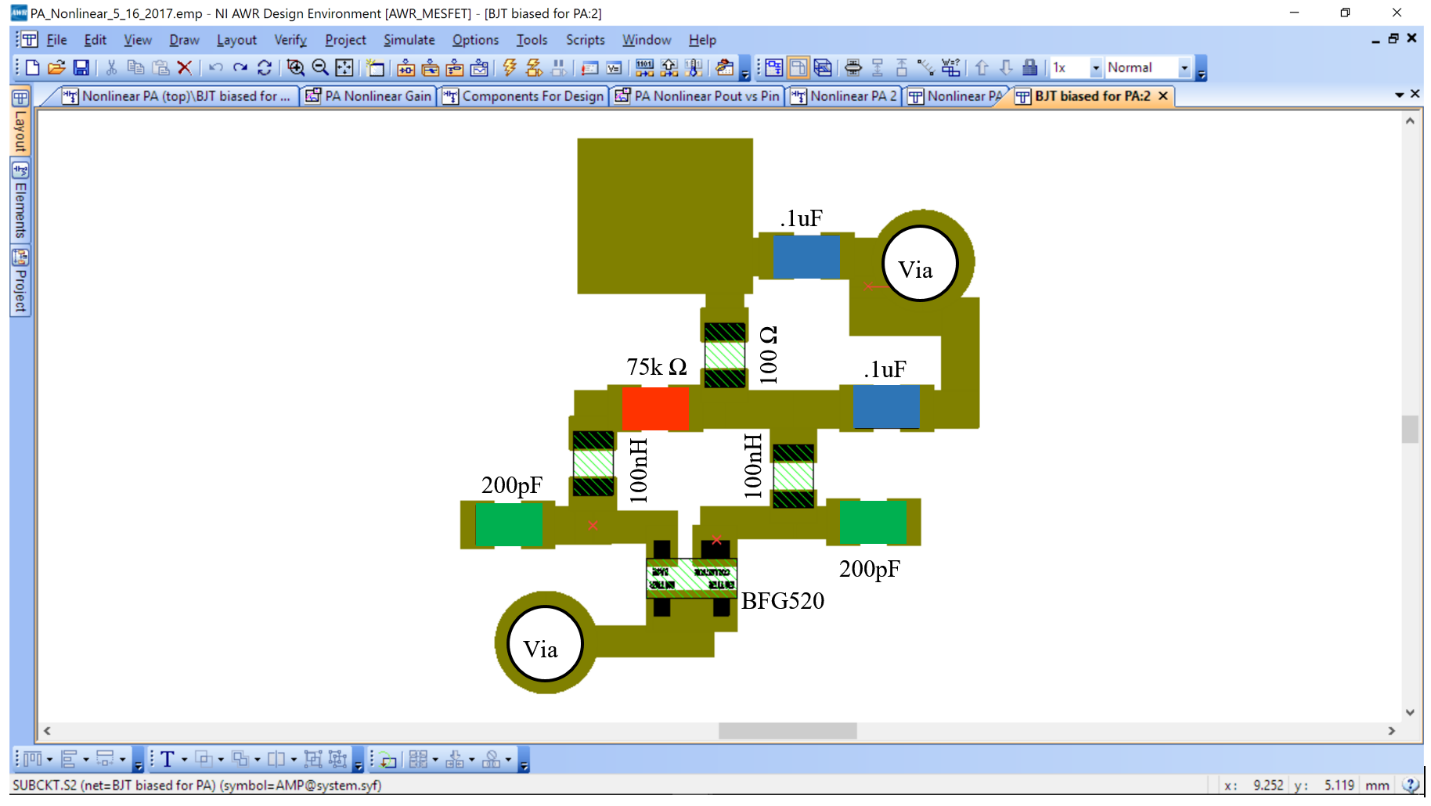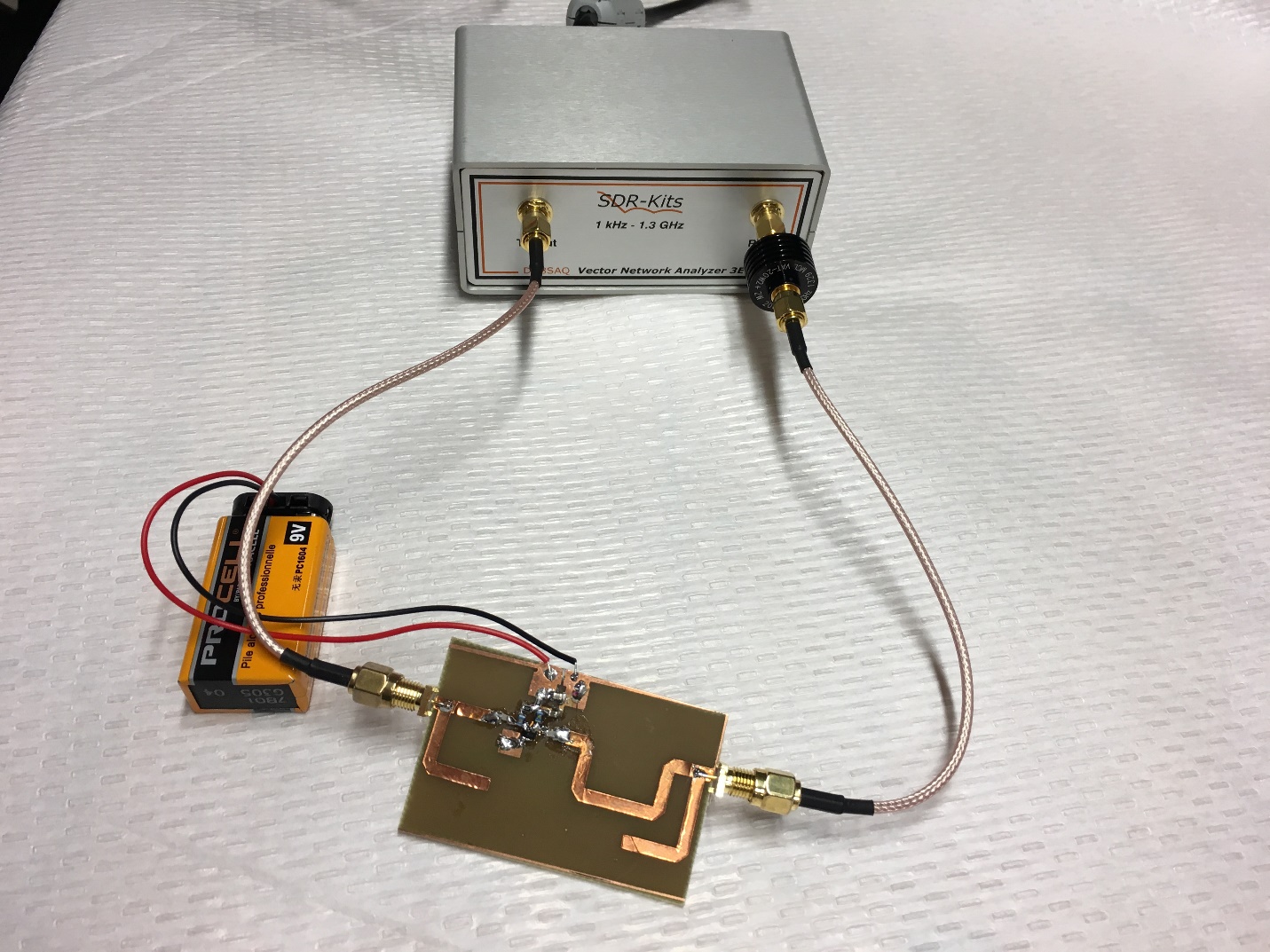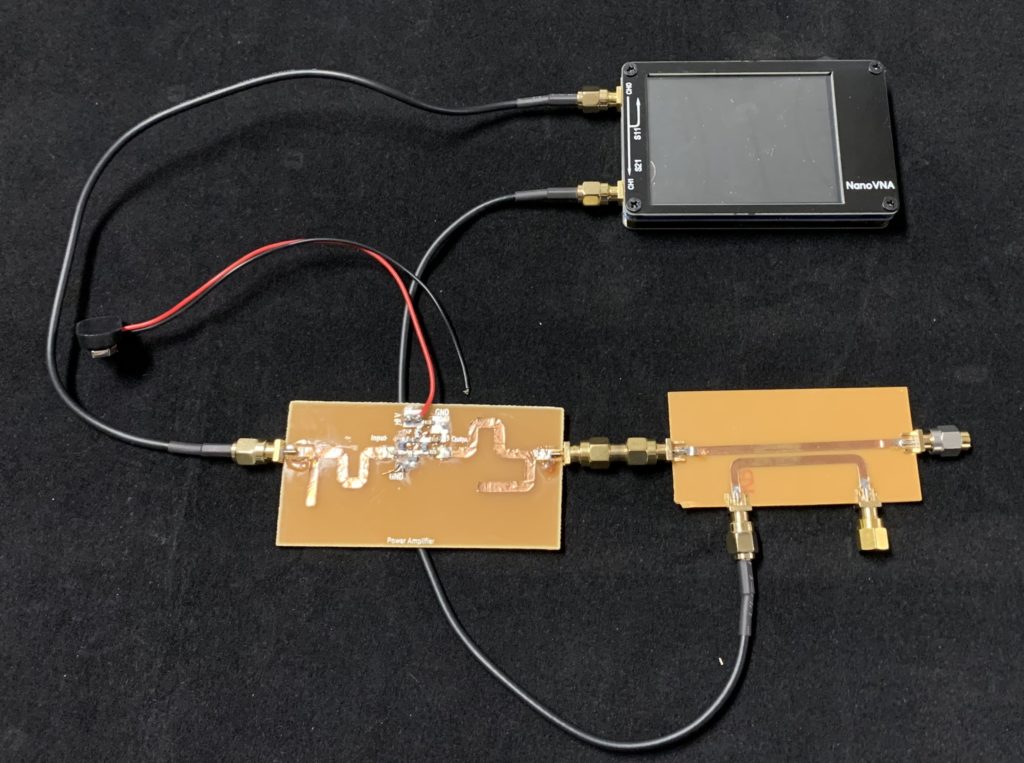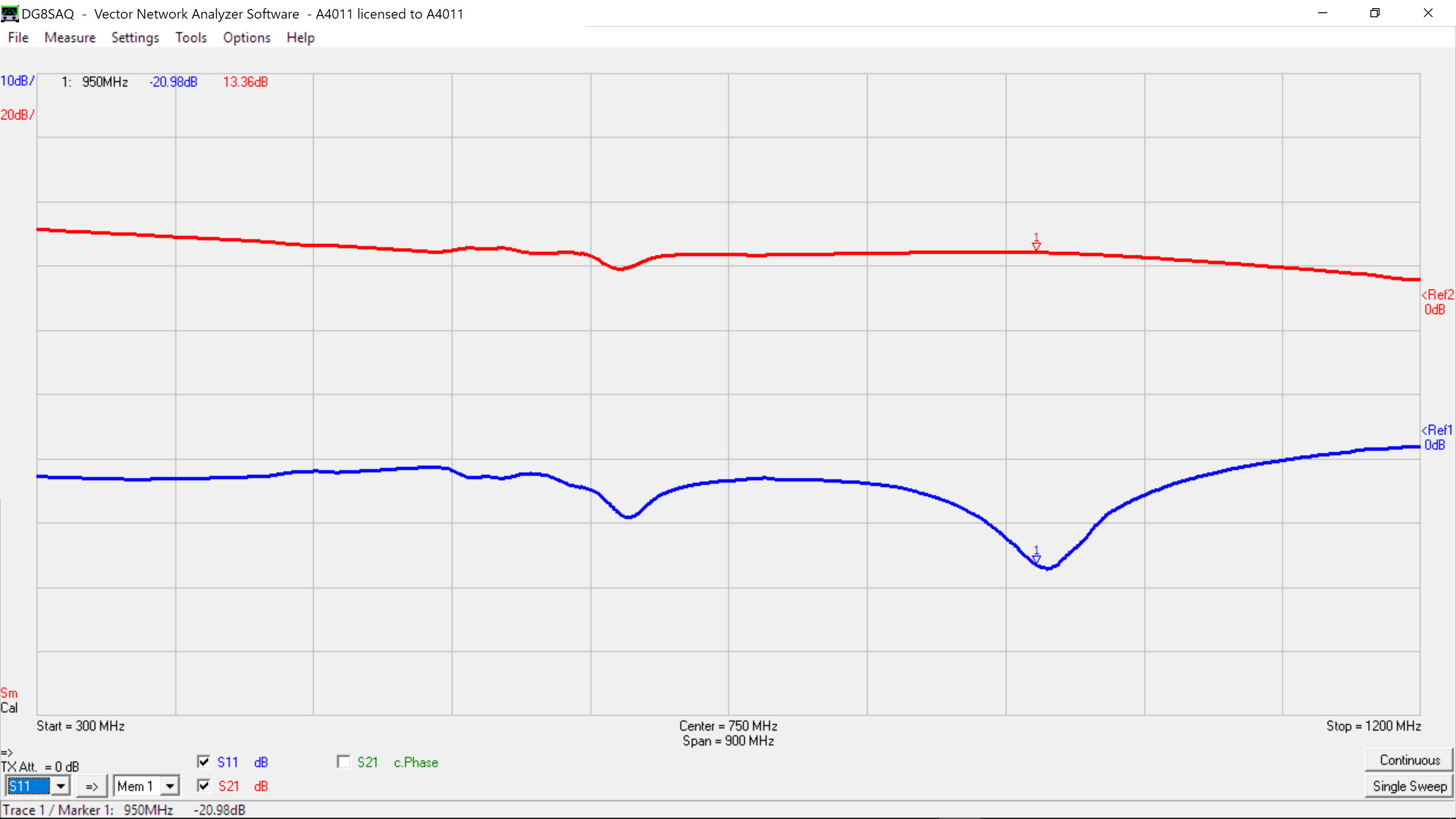

Amplifier Fabrication Foil Method
Assemble Amplifier Core
The layout with components values is shown below. You can find the components from the color-coded sheet in your kit. Note there is a unique identified for each component, which includes a combination of: Number of components in kit, package style, number of pins, shape of pins, and finally color on packaging.
The assembly of the ports is easy, just solder on an SMA connector. For the amplifier core, the following will assist assembly.

For designs using the 2D cutter, the assistant will hand you back your two networks on a piece of tape. You need to transfer both pieces onto your PA PCB. It may be easier to do each one separately, or you can do as a pair. They should overlap the rectangular pads at the input and output of the PA ad described above. A completed PA with 2D cut impedance networks is shown below. The 2D cut traces were soldered extensively to the rectangular pads to ensure good contact. Do not trust the adhesive on the cut networks to give a good electrical connection.
If using the BFU66o please refer to the data sheet, the wide pin is not on the upper left, but lower right. The BJT connection is electrically the same as the BFU550.
Build Impedance Synthesis Boards
Overview of impedance synthesis PCB
Instructions on building a foil PCB. Please remember that the SMA that connects to the amplifier should NOT be soldered. You will remove it when you connect it to the PA.
Testing
The PA is tested in the VNA for S11 and S21. The Test setup is shown below. A 20 dB attenuator is inserted inline with the VNA to prevent damage. The loss is calibrated out, so the measurements are accurate.

If you do not have an attenuator, you can use your coupler as one as the directional port attenuates approximately -15dB.

The test results are shown below for the BFG520 transistor (discontinued). Your results will vary depending on your transistor, but should look qualitatively similar.. The amplifier achieved 13.36 dB of gain and has a return loss of 20.98 dB at 950 MHz.
